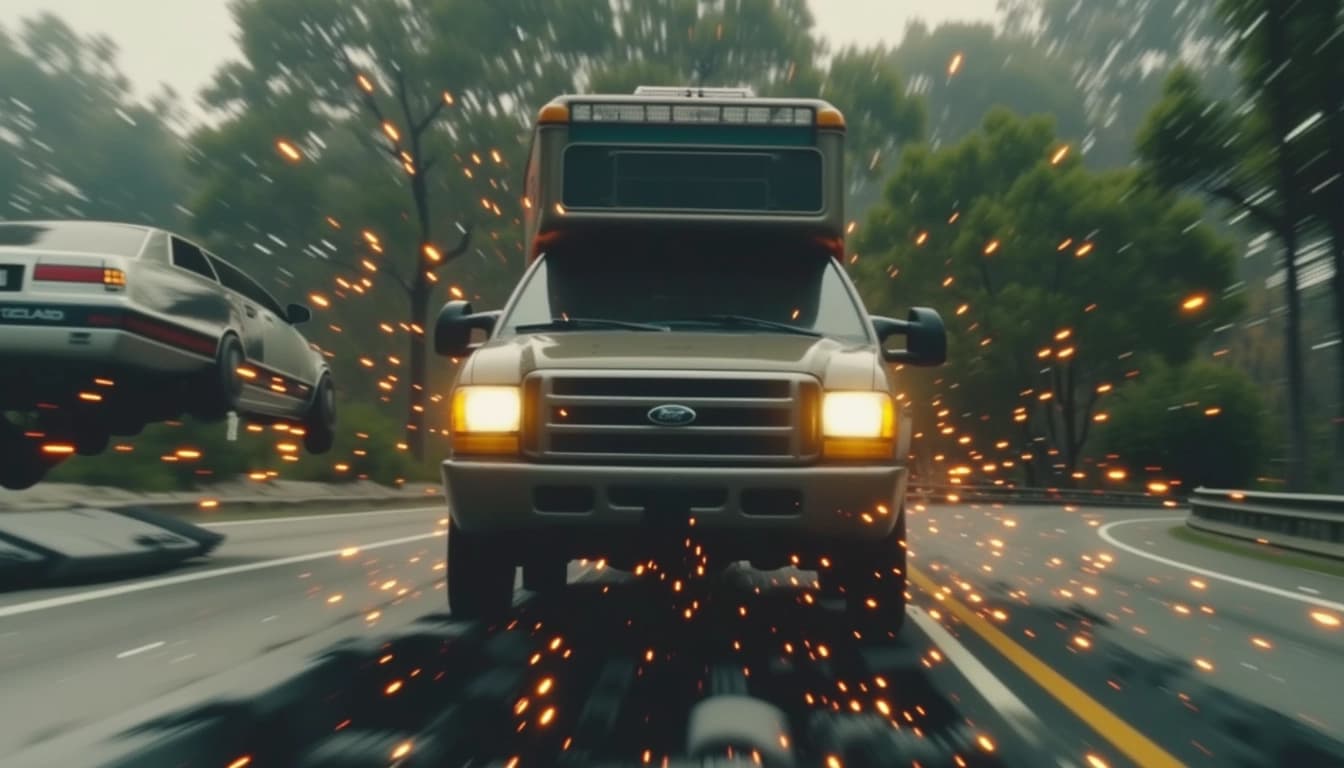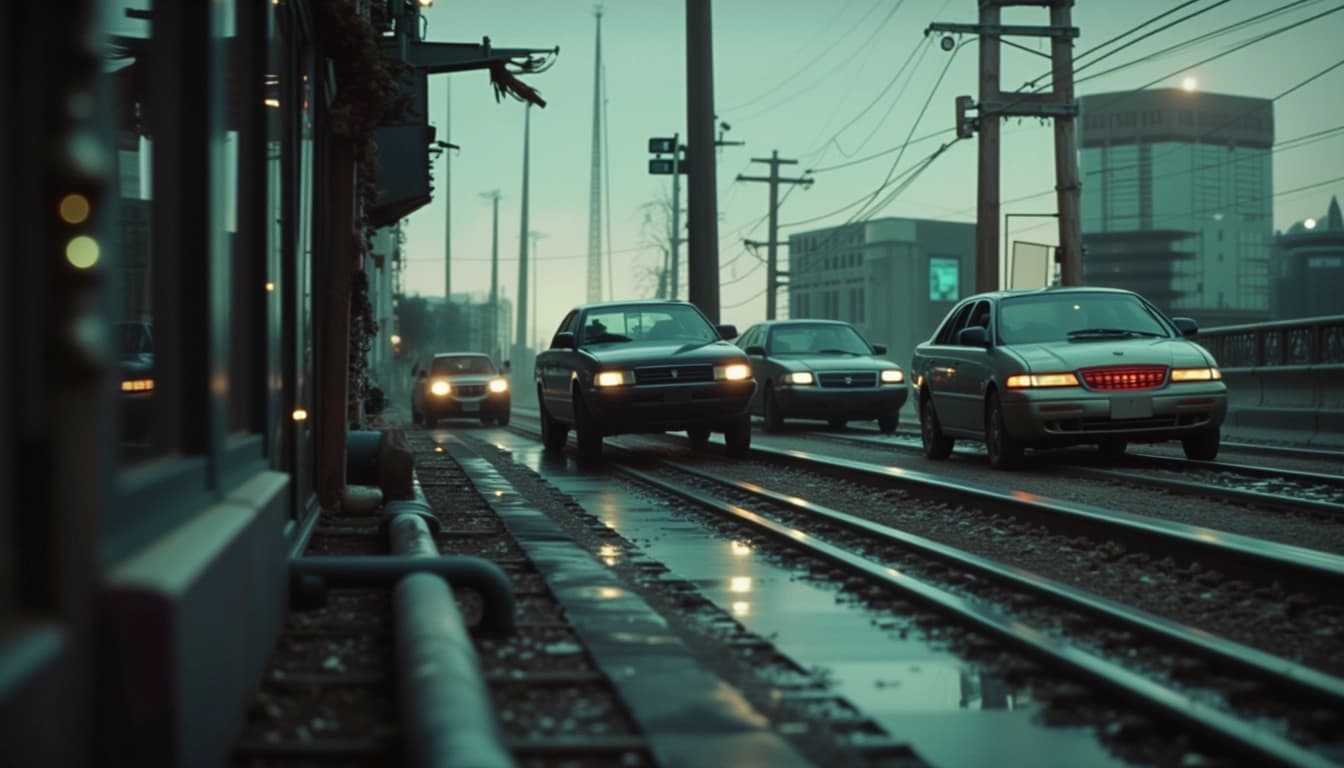
Fixing Blurry AI Videos with RealBasicVSR
By John Doe 5 min
Key Points
Research suggests real-basicsr-video-superresolution, specifically RealBasicVSR, can enhance blurry AI videos by increasing resolution and reducing artifacts.
It seems likely that users can use this tool via the Replicate API for ease or run it locally with technical setup.
The evidence leans toward it being effective for real-world video degradations, potentially including AI-generated videos.
What is Video Super-Resolution?
Video super-resolution is a technique that makes blurry, low-resolution videos sharper by increasing their detail using advanced algorithms, often based on machine learning. This is particularly helpful for AI-generated videos that may appear blurry due to low resolution.
How to Use real-basicsr-video-superresolution
You can fix blurry AI videos using real-basicsr-video-superresolution in two main ways:
Using the Replicate API
Sign up at [Replicate](https://replicate.com/) and find the model page for "real-basicvsr-video-superresolution."
Upload your video, wait for processing (typically within 5 minutes), and download the enhanced version. Note: This costs about $0.25 per run, varying by input.
Running Locally
Clone the GitHub repository at [RealBasicVSR](https://github.com/ckkelvinchan/RealBasicVSR), install dependencies like PyTorch, and download pre-trained checkpoints.
Run the inference script with your video, adjusting parameters like frame rate and output format. This requires a GPU and technical setup.
Unexpected Detail
While primarily designed for real-world videos, it may also improve AI-generated videos, though effectiveness depends on the type of blur.
Video super-resolution is a computer vision task aimed at increasing the resolution of video sequences, typically from lower to higher resolutions, while preserving content and motion consistency. This technique is crucial for improving the quality of videos that appear blurry due to low resolution, a common issue with AI-generated content. Unlike simple scaling, which can introduce artifacts, super-resolution leverages machine learning to intelligently reconstruct missing details, making it an ideal solution for enhancing AI videos.
Understanding real-basicsr-video-superresolution
RealBasicVSR, referred to in the query as real-basicsr-video-superresolution, is a state-of-the-art model for video super-resolution, accepted to CVPR 2022 and detailed in the paper 'Investigating Tradeoffs in Real-World Video Super-Resolution'. This model is designed to handle the diversity and complexity of real-world video degradations, employing a recurrent structure to propagate information across frames. It includes an image pre-cleaning stage to reduce noises and artifacts before propagation, balancing detail synthesis and artifact suppression. This makes it suitable for enhancing not only real-world videos but potentially AI-generated ones with similar degradation characteristics.
Performance and Benchmarks
The model's effectiveness is supported by its performance on benchmarks like the MSU Video Upscalers, ranking #9 for quality enhancement, indicating its robustness for various video types, including those generated by AI. This performance highlights its ability to handle real-world scenarios where video quality is compromised by various factors, making it a versatile tool for video enhancement.
Practical Usage: Methods and Steps
Users can utilize real-basicsr-video-superresolution to enhance their videos by following specific steps. The process typically involves preparing the video data, applying the model to upscale the resolution, and then fine-tuning the output to ensure the best possible quality. This section will guide you through the necessary steps to achieve optimal results with this advanced super-resolution technique.
Conclusion & Next Steps
In conclusion, real-basicsr-video-superresolution offers a powerful solution for enhancing video quality, particularly for AI-generated content. By understanding its capabilities and following the practical steps outlined, users can significantly improve the resolution and clarity of their videos. Future advancements in this field may further enhance the model's performance and applicability to a wider range of video types.
- Prepare your video data for processing
- Apply the real-basicsr-video-superresolution model
- Fine-tune the output for optimal quality
- Evaluate the enhanced video for improvements
The RealBasicVSR model is a powerful tool for video super-resolution, enhancing the quality of low-resolution videos. It leverages advanced deep learning techniques to upscale videos while maintaining clarity and detail. This makes it ideal for applications in media production, surveillance, and archival restoration.
Using the Replicate API
Replicate provides a user-friendly platform to run the RealBasicVSR model without requiring local setup. Users can easily upload their videos and receive super-resolved outputs. The process is streamlined, making it accessible even for those without technical expertise. However, it's important to note that each run incurs a cost, typically around $0.25 per execution.
Steps to Use Replicate API
To use the Replicate API, start by signing up for an account on their platform. Once registered, navigate to the RealBasicVSR model page. Upload your video and initiate the processing, which usually completes within minutes. The super-resolved video will be available for download once the processing is done.
Running the Model Locally
For users with technical expertise, running the RealBasicVSR model locally offers more control and flexibility. This method requires setting up the necessary environment and dependencies. The GitHub repository provides detailed instructions for installation and execution, ensuring a smooth setup process.
Installation and Setup
The local setup involves cloning the repository, installing PyTorch, and configuring additional libraries like mmcv-full and mmedit. Pre-trained checkpoints must also be downloaded to ensure the model functions correctly. This approach is best suited for those comfortable with command-line tools and Python environments.
Conclusion & Next Steps
The RealBasicVSR model is a versatile solution for video super-resolution, offering both API and local execution options. Whether you choose Replicate for simplicity or local setup for control, the model delivers high-quality results. Future enhancements may include additional features and optimizations to further improve performance.

- Sign up for Replicate to use the API
- Clone the GitHub repository for local setup
- Download pre-trained checkpoints
RealBasicVSR is a cutting-edge AI model designed for video super-resolution, enhancing the quality of blurry or low-resolution videos. It leverages advanced deep learning techniques to upscale videos while preserving details and improving clarity. This model is particularly useful for restoring old footage, enhancing surveillance videos, or improving the quality of streaming content.
Key Features of RealBasicVSR
RealBasicVSR stands out due to its ability to handle real-world video degradation effectively. Unlike traditional methods, it addresses challenges like noise, compression artifacts, and motion blur. The model supports various scaling factors, such as 2x, 3x, and 4x, making it versatile for different use cases. Additionally, it processes videos in sequences, ensuring temporal consistency and smooth transitions between frames.
Temporal Consistency
One of the standout features of RealBasicVSR is its focus on temporal consistency. By analyzing multiple frames simultaneously, the model ensures that the enhanced video maintains smooth motion and avoids flickering artifacts. This is crucial for applications like video restoration, where preserving the natural flow of motion is essential.
How to Use RealBasicVSR
Using RealBasicVSR is straightforward, whether you're running it locally or via a cloud API. The model requires a compatible GPU for local execution, and the process involves specifying input and output directories along with optional parameters like frame rate and sequence length. For users without high-end hardware, cloud services like Replicate offer a convenient alternative, though at a cost.
Applications of RealBasicVSR
RealBasicVSR has a wide range of applications, from enhancing home videos to improving medical imaging. It is particularly valuable in industries like entertainment, where it can restore classic films, and in security, where it can clarify surveillance footage. The model's ability to handle real-world degradation makes it a powerful tool for any scenario requiring high-quality video output.
Conclusion & Next Steps
RealBasicVSR represents a significant advancement in video super-resolution technology. Its ability to handle real-world challenges and produce high-quality results makes it a valuable tool for both professionals and enthusiasts. To get started, download the model, prepare your input videos, and explore the possibilities of enhanced video quality.

- Download the model checkpoint
- Prepare your input video
- Run the inference script
- Review the enhanced output
Fixing blurry AI videos can be a challenging task, especially when dealing with low-resolution or degraded content. The RealBasicVSR model offers a promising solution by leveraging advanced video super-resolution techniques. This approach is designed to enhance video quality, making it particularly useful for AI-generated videos that may suffer from blurriness or lack of detail.
Understanding RealBasicVSR
RealBasicVSR is a state-of-the-art video super-resolution model that focuses on real-world applications. It addresses common degradation patterns found in videos, such as blurriness, noise, and compression artifacts. The model is built on the BasicVSR framework but incorporates additional enhancements to handle real-world scenarios more effectively. This makes it a versatile tool for improving video quality across various use cases.
How RealBasicVSR Works
The model employs a bidirectional recurrent network to process video frames, allowing it to capture temporal dependencies and improve resolution. It uses a combination of spatial and temporal information to reconstruct high-quality frames from low-resolution inputs. Additionally, RealBasicVSR includes a degradation-aware module that adapts to different types of video degradation, ensuring robust performance across diverse scenarios.
Using RealBasicVSR for AI Videos
While RealBasicVSR is primarily designed for real-world videos, it can also be applied to AI-generated content. Many AI videos exhibit similar degradation patterns, such as blurriness or artifacts, making the model a suitable choice for enhancement. However, the effectiveness may vary depending on the specific AI generation process and the nature of the degradation.

Implementation Options
There are two main ways to use RealBasicVSR: through the Replicate API or by running it locally. The Replicate API offers a convenient, cloud-based solution with a pay-per-use pricing model. Local execution provides more control and customization but requires technical expertise and hardware resources. Both options have their pros and cons, depending on the user's needs and constraints.
Replicate API
The Replicate API simplifies the process of using RealBasicVSR by handling the infrastructure and setup. Users can upload their videos and receive enhanced results without worrying about installation or configuration. This option is ideal for those who prioritize ease of use and quick results over customization.
Local Execution
Running RealBasicVSR locally allows for greater flexibility and control over the enhancement process. Users can fine-tune parameters and integrate the model into their existing workflows. However, this approach requires a compatible GPU and some technical knowledge to set up and operate effectively.
Conclusion & Next Steps
RealBasicVSR provides a powerful tool for enhancing blurry AI videos, offering both convenience and flexibility. Whether through the Replicate API or local execution, users can achieve significant improvements in video quality. For best results, it's recommended to experiment with different settings and evaluate the output to ensure it meets your specific needs.

- Explore the Replicate API for quick and easy video enhancement.
- Consider local execution for more control and customization.
- Experiment with different settings to optimize results for your specific use case.